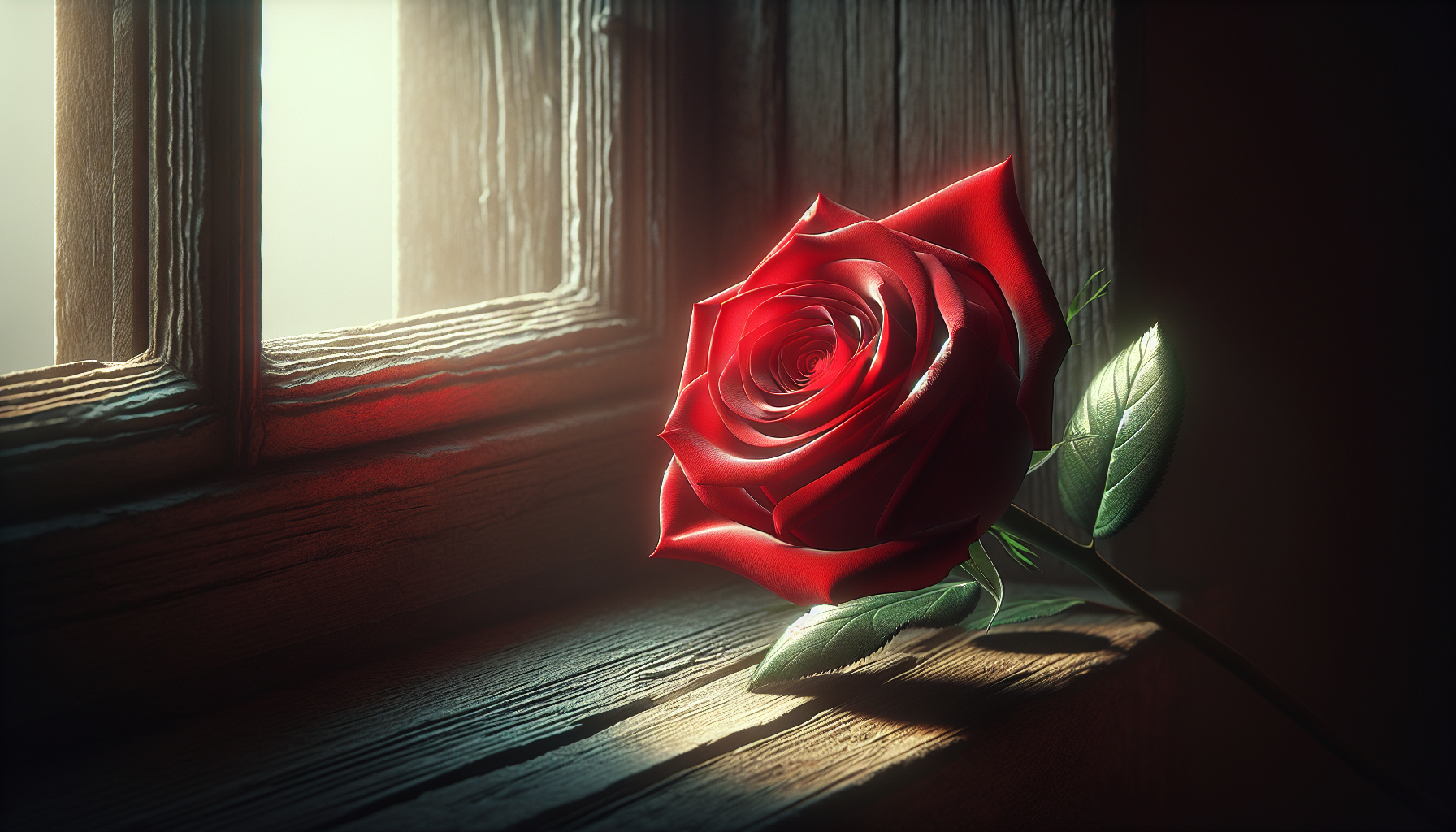
Imagine a world where every day feels like a fairytale, where your heart beats a little faster and your cheeks blush at the touch of a hand. This is the realm of romance, a magical experience that captures our hearts and souls. Whether it’s the flutter of butterflies in your stomach or the warmth of a tender embrace, romance is an undeniable force that has been captivating lovers throughout history. In this article, we will explore the intricacies of romance, discovering its many facets and celebrating its power to create unforgettable moments. So prepare yourself for a journey into the realm of love and let romance sweep you off your feet.

History of Romance
Romance has a rich and fascinating history that spans centuries. From its origins to its development in different eras, romance has captured the hearts and imaginations of people all around the world. Let’s explore the history of romance and its various facets.
Origins of Romance
The origins of romance can be traced back to ancient times, where tales of love and desire were part of oral traditions and epic poetry. In ancient civilizations such as Mesopotamia, Egypt, and Greece, stories of mythical love and passionate relationships were often intertwined with religion and folklore.
One of the most well-known ancient love stories is that of Cupid and Psyche from Roman mythology. This tale depicted the power of love and the trials faced by the two lovers, highlighting the timeless theme of romance overcoming obstacles.
Medieval Romance
During the Middle Ages, romance took on a new form with the rise of chivalry and courtly love. Knights and ladies engaged in a romantic ideal, where chivalrous actions, devotion, and admiration played prominent roles. These stories often portrayed knights on quests to win the affection of a noble lady, showcasing the value placed on honor, loyalty, and poetic expressions of love.
The Arthurian legends, with its captivating tales of King Arthur, his knights, and the love triangle between Arthur, Guinevere, and Lancelot, exemplify the medieval romance genre. These stories depicted a world of honor, passion, and tragic love, captivating audiences of the time and leaving a lasting impact on literary traditions.
Romanticism Era
In the 18th and 19th centuries, the Romanticism era emerged, bringing a new wave of romantic literature and art. This period emphasized the individual’s emotions, imagination, and the beauty of nature. Romanticism encouraged a focus on intense emotional experiences and introspection, which greatly influenced the portrayal of love in literature.
Authors such as Lord Byron, Jane Austen, and William Wordsworth became iconic figures of romance in this era. Their works explored themes of love, longing, and the complexities of human emotions. Romanticism brought a new level of depth and sensibility to romance, shaping the way we perceive love in literature and art to this day.
Characteristics of Romance
Romance is characterized by an array of elements that evoke intense emotions and capture the essence of love. These characteristics are integral in creating compelling narratives and resonating with readers and audiences alike.
Emotional Intensity
One of the defining characteristics of romance is its emotional intensity. Whether it be the thrill of new love, the longing of separation, or the anguish of heartbreak, romance elicits powerful emotions in its portrayal of relationships. Through vivid descriptions and evocative language, romance taps into our deepest emotions and allows us to experience the highs and lows of love alongside the characters.
Idealized Love
Romantic narratives often present an idealized version of love. They depict relationships that are filled with passion, devotion, and a sense of destiny. Idealized love in romance showcases the belief that true love transcends barriers and can conquer all obstacles. It provides an aspirational view of love, inspiring readers to seek connections that are both passionate and meaningful.
Conflict and Obstacles
Romantic stories commonly feature conflict and obstacles that the protagonists must overcome in order to be together. These challenges can range from societal expectations and class differences to personal flaws and misunderstandings. The presence of conflict and obstacles in romance adds depth and tension to the narrative, heightening the emotional journey of the characters and keeping readers engaged.
Types of Romance
Romance exists in various forms, each with its own unique settings, time periods, and themes. Whether set in contemporary times, the past, or even imaginary worlds, these different types of romance cater to a wide range of readers’ preferences.
Contemporary Romance
Contemporary romance is set in modern times and revolves around the complexities of love in the present day. It explores the challenges and joys of relationships in a contemporary setting, often tackling themes such as dating, career aspirations, and societal expectations. This genre resonates with readers who seek relatable stories and characters facing the dilemmas of love in the digital age.
Historical Romance
Historical romance takes readers back in time, immersing them in different eras and cultures. These stories often unfold in settings such as Victorian England, the American Wild West, or ancient civilizations, giving readers a glimpse into the past. Historical romance combines elements of love, adventure, and historical accuracy, allowing readers to experience the allure of a bygone era.
Fantasy Romance
Fantasy romance combines elements of the supernatural or magical with the romantic themes and relationships. It transports readers to imaginary worlds filled with mythical creatures, sorcery, and epic quests. Fantasy romance embraces the extraordinary, bringing together love, adventure, and enchantment in captivating narratives that push the boundaries of imagination.
Elements of a Romantic Relationship
A romantic relationship is composed of various elements that contribute to its depth and longevity. These elements involve the emotional, physical, and psychological connections formed between two individuals.
Chemistry and Attraction
Chemistry and attraction form the foundation of a romantic relationship. A spark that ignites between two people creates a strong initial bond, drawing them towards one another. This chemistry can be both physical and emotional, based on shared interests, values, and a deep sense of connection. The presence of chemistry and attraction fosters an exciting and passionate dynamic between partners.
Intimacy and Emotional Connection
Intimacy and emotional connection are vital aspects of a romantic relationship. Intimacy goes beyond physical closeness and encompasses emotional vulnerability, trust, and understanding. It involves sharing one’s thoughts, fears, dreams, and deepest desires with a partner. Emotional connection contributes to a sense of belonging and strengthens the bond between two individuals, allowing them to navigate the ups and downs of life together.
Commitment and Trust
Commitment and trust are fundamental pillars of a healthy and lasting romantic relationship. Commitment involves a mutual agreement between partners to prioritize and invest in the relationship. It requires a willingness to make compromises, support each other’s goals, and work through challenges together. Trust, on the other hand, is built over time through open communication, honesty, and reliability. It is the belief that both partners have each other’s best interests at heart and can count on one another.

Romantic Gestures
Romantic gestures play a significant role in expressing love and affection within a relationship. They can range from small, heartfelt gestures to grand displays of affection, all aimed at making the recipient feel cherished and appreciated.
Gift Giving
Gift giving is a classic romantic gesture that allows partners to show their love through thoughtful presents. It could be something as simple as a handwritten note or a carefully chosen item that holds sentimental value. Gifts can serve as a tangible reminder of the love shared and can bring joy and excitement to both the giver and the recipient.
Love Letters
Love letters have long been regarded as the epitome of romantic expression. In a world dominated by digital communication, taking the time to write a heartfelt letter can be incredibly meaningful. It allows partners to pour their feelings onto paper, expressing their love, admiration, and appreciation in a timeless and personal way. Love letters have the power to create a lasting connection and serve as cherished keepsakes for years to come.
Acts of Service
Acts of service involve going out of one’s way to help and support a partner. It could be as simple as cooking a favorite meal, completing household chores, or offering a listening ear after a long day. These acts of service demonstrate care, thoughtfulness, and a willingness to put the needs of the other person first. They create an atmosphere of love and nurturing within the relationship, fostering a sense of partnership and appreciation.
Romance in Literature
Romance has played a pivotal role in the world of literature, captivating readers with tales of love, passion, and longing. From romantic novels to poetic works, the portrayal of romance in literature offers a range of narratives that explore the complexities and beauty of love.
Romantic Novels
Romantic novels encompass a vast genre that spans different subgenres, including contemporary romance, historical romance, and fantasy romance. These novels immerse readers in captivating stories that center around love and relationships. With vivid characters, engrossing plots, and emotional depth, romantic novels continue to captivate readers of all ages.
Poetry of Love
Love poetry has been a popular form of literary expression throughout history. From Shakespeare’s sonnets to the works of Pablo Neruda, love poetry delves into the depths of human emotion, often using metaphors and vivid imagery to convey passionate feelings. It evokes a range of emotions, allowing readers to connect with the themes of love, desire, and heartache on a profound level.
Romantic Themes in Literature
Romantic themes permeate various genres of literature, leaving a lasting impact on readers. From classic works like “Romeo and Juliet” to contemporary novels like “Pride and Prejudice,” themes such as forbidden love, soulmates, and love conquering all continue to resonate with readers. These romantic themes add depth and emotional resonance to literary works, ensuring that the allure of romance remains an essential part of the literary landscape.
Romance in Films
Romance has also taken center stage in the realm of cinema, captivating audiences with heartfelt stories and unforgettable characters. From whimsical romantic comedies to epic love stories, the world of film celebrates the power of love and its complexities.
Romantic Comedies
Romantic comedies, or “rom-coms,” bring laughter and love together in a lighthearted and entertaining way. These films often revolve around the budding romance between two characters, intertwined with comedic moments and obstacles standing in their way. Romantic comedies provide a delightful escape, leaving viewers with a sense of joy and optimism about love and relationships.
Dramatic Love Stories
Dramatic love stories delve into the raw and sometimes heart-wrenching aspects of romantic relationships. These films explore themes such as sacrifice, passion, and tragic love. They often leave viewers reflecting on the complexities of the human heart and the profound impact love can have on our lives.
Epic Romances
Epic romances encompass sweeping tales that transcend time and place. These films often span generations, showcasing love stories that withstand the test of time and endure against all odds. Epic romances leave viewers in awe of the power of love and its ability to transcend barriers, touching the deepest parts of our hearts.
Cultural Differences in Romance
Romance is shaped by cultural beliefs, traditions, and societal norms, and can vary significantly across different countries and regions. Exploring these cultural differences provides insights into the uniqueness of romantic relationships around the world.
Romantic Traditions Around the World
Every culture has its own set of romantic traditions that define how love and relationships are perceived and celebrated. For example, in Japan, the exchanging of gifts and handwritten letters holds great significance in expressing love and devotion. In India, arranged marriages are still prevalent, where love often develops and grows over time within the established union. These diverse traditions highlight the rich tapestry of romance and the various ways it is expressed across different cultures.
Views on Love and Relationships
The perception of love and relationships varies across cultures, influenced by factors such as religion, societal norms, and historical contexts. Some cultures place great emphasis on romantic love and individual choice in relationships, while others prioritize familial ties and duty. Understanding these diverse views provides a broader perspective on love and serves as a reminder that there is no one-size-fits-all approach to romance.
Impact of Romance on Mental and Emotional Well-being
Beyond its artistic and cultural significance, romance also plays a vital role in our mental and emotional well-being. The presence of love and connection can have profound effects on our happiness and overall sense of fulfillment.
Happiness and Satisfaction
Being in a loving and supportive romantic relationship contributes to happiness and life satisfaction. The emotional closeness, companionship, and shared experiences that come with being in love can enhance overall well-being. The feeling of being loved and cared for by someone can create a sense of fulfillment and contentment in our lives.
Reduced Stress and Anxiety
Romantic relationships have the potential to reduce stress and anxiety levels. Research has shown that having a supportive partner can provide a buffer against stress and help individuals cope during challenging times. The emotional support and understanding received from a romantic partner can alleviate anxiety and promote overall mental well-being.
Sense of Belonging
Romantic relationships provide a sense of belonging and connectedness. Knowing that there is someone who truly understands and accepts us can foster a profound sense of security and belonging. This feeling of being unconditionally loved and supported can have a profound impact on our mental and emotional well-being, reinforcing our sense of self-worth and fostering personal growth.
Navigating Challenges in Romantic Relationships
Romantic relationships are not without their challenges. The key to fostering a healthy and lasting relationship lies in effective communication, trust, and the ability to navigate and resolve conflicts.
Communication Issues
Communication is a cornerstone of a successful romantic relationship. Issues may arise when partners struggle to effectively express their thoughts, feelings, and needs. It is important to cultivate open and honest communication, allowing space for both partners to be heard and understood. Regular check-ins, active listening, and a willingness to address concerns are key to resolving communication issues and strengthening the bond between partners.
Trust Issues
Trust forms the foundation of any healthy relationship. Trust issues can arise from past experiences, insecurity, or breaches of trust. Rebuilding trust requires time, effort, and a commitment to open communication. Building trust involves being reliable, keeping promises, and showing consistent honesty and transparency. With patience and understanding, trust can be repaired, leading to a stronger and more resilient relationship.
Conflict Resolution
Conflicts are a natural part of any relationship and can arise due to differences in opinions, values, and needs. Effective conflict resolution involves active listening, empathy, and finding mutually satisfactory solutions. It is important to approach conflicts with respect and a willingness to compromise. Addressing conflicts in a healthy and constructive manner strengthens the relationship and fosters a deeper understanding between partners.
In conclusion, romance is a universal and timeless theme that has woven its way into the fabric of human culture throughout history. From ancient love stories to contemporary novels and films, romance continues to captivate and inspire audiences with its emotional depth, idealized love, and portrayal of enduring relationships. The impact of romance on our mental and emotional well-being further emphasizes its importance in our lives. By understanding the characteristics of romance, exploring diverse cultural perspectives, and navigating the challenges that arise, we can cultivate and cherish the profound connections that lie at the heart of romantic relationships.







